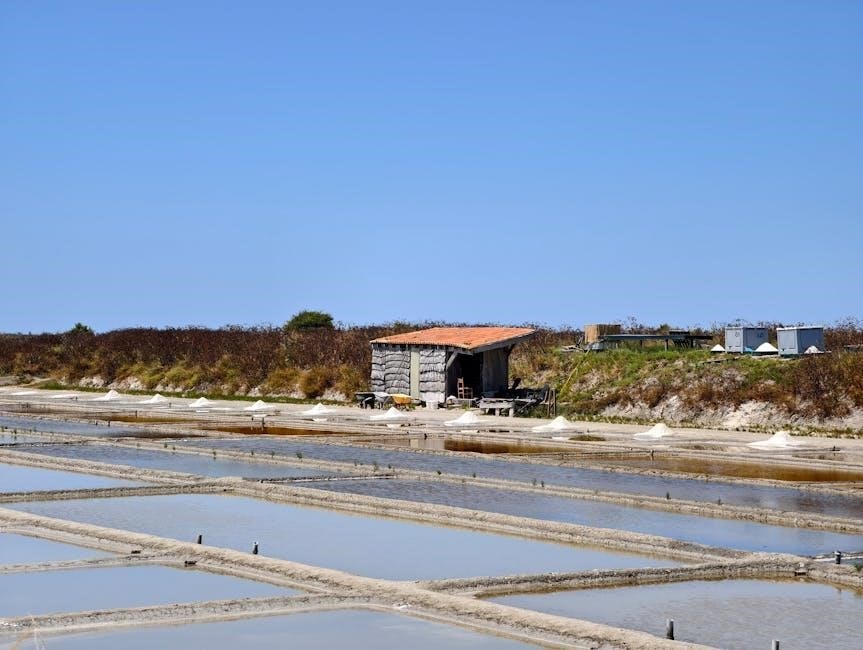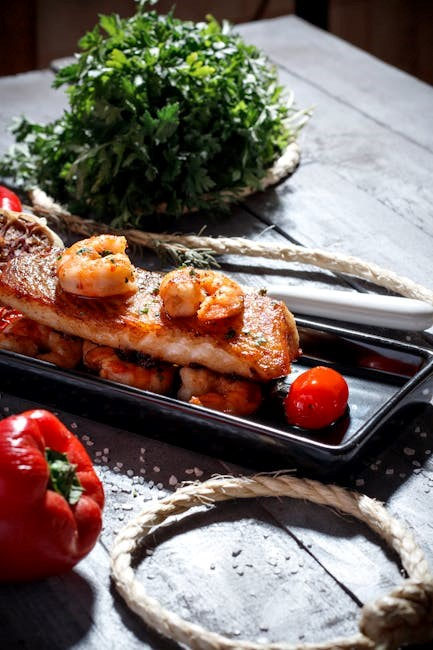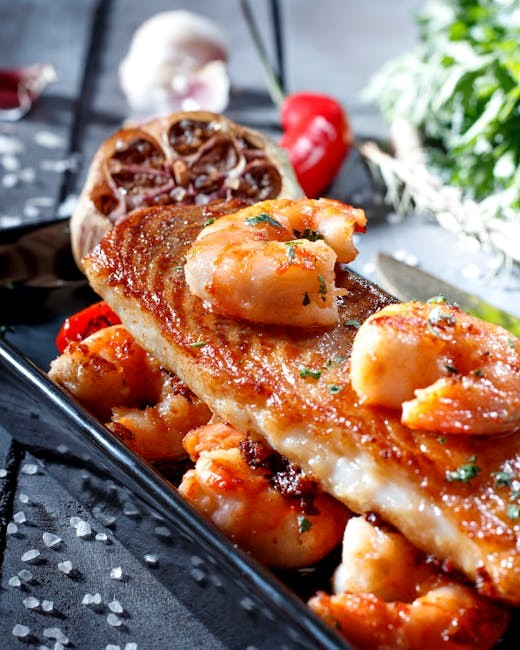vocabulario de restaurante en inglés pdf

Learning restaurant vocabulary in English is essential for effective communication in hospitality settings. This section introduces key terms, phrases, and concepts to enhance your dining experience worldwide.
1.1 Importance of Learning Restaurant Vocabulary
Mastering restaurant vocabulary in English is crucial for clear communication, whether you’re a customer or staff. It enhances dining experiences, helps avoid misunderstandings, and ensures effective ordering. Knowing terms like appetizer, main course, and dessert aids in navigating menus. For staff, understanding phrases like Can I take your order? or How would you like your meal prepared? improves service quality. This vocabulary also assists travelers in foreign countries, making dining more enjoyable and stress-free. Learning these terms fosters confidence and professionalism in restaurant interactions.
1.2 Common Scenarios in a Restaurant Setting
In a restaurant, common scenarios include making reservations, greeting customers, taking orders, serving food, and handling payments. Customers often ask for menus, request recommendations, or specify dietary preferences. Staff must efficiently manage these interactions, ensuring smooth service. Scenarios also involve handling special requests, such as food preparation methods or seating preferences. Learning vocabulary for these situations enhances communication, whether you’re a customer seeking assistance or staff providing excellent service. These interactions are fundamental to creating a positive dining experience for everyone involved.

Basic Phrases for Restaurant Staff
Basic phrases for restaurant staff include greetings, taking orders, and serving food. Phrases like “Can I take your order?” and “Here’s your food” are essential for smooth communication.
2.1 Greetings and Welcome Phrases
Greetings are crucial in a restaurant setting to create a welcoming atmosphere. Common phrases include “Good evening! Welcome to our restaurant” and “How can I assist you today?” These expressions set a positive tone for customers. Additionally, phrases like “Can I help you?” and “Right this way, please” are essential for directing guests to their tables. Ensuring staff uses polite and friendly language helps enhance the overall dining experience, making customers feel valued and comfortable from the moment they arrive.
2.2 How to Take Orders Effectively
Taking orders efficiently is a key skill for restaurant staff. Start with phrases like, “What would you like to order today?” or “Can I take your order?” Listen carefully and confirm with, “Anything else?” or “Would you like any sides?” For special requests, use phrases like, “No problem, I can note that down,” or “We can prepare it without gluten;” Ensure accuracy by repeating the order: “So, that’s the steak medium-rare and the vegetarian salad?” This approach ensures clarity and satisfaction, making the dining experience smooth and enjoyable for customers.
2.3 Phrases for Serving Food and Drinks
When serving food and drinks, use clear and polite phrases to ensure a smooth service. Start with, “Here you go,” or “Here’s your order.” For drinks, say, “Can I refresh your beverage?” or “Would you like another drink?” When delivering food, announce, “Here’s your appetizer,” or “Your main course is ready.” Check in periodically with, “How’s everything tasting?” or “Do you need anything else?” These phrases ensure a professional and attentive service, enhancing the overall dining experience for customers.

Food and Beverage Vocabulary
Mastering food and beverage terms is crucial for clear communication. Learn categories like appetizers, main courses, desserts, and drinks, including menu descriptions and dietary preferences effectively.
3.1 Types of Cuisines and Dishes
Understanding various cuisines like Italian, Mexican, and Asian is key. Dishes include appetizers, such as soups, salads, and tapas, followed by main courses like meat, fish, and pasta. Desserts range from cakes to fruit. Recognizing these terms helps in ordering and describing preferences accurately. Learning these categories enhances your ability to navigate menus confidently, ensuring a seamless dining experience in any restaurant setting.
3.2 Vocabulary for Appetizers, Main Courses, and Desserts
Appetizers, or entradas, include options like soups, salads, and tapas. Main courses, known as platos principales, feature dishes such as grilled meats, fish, and pasta. Desserts, or postres, offer sweet treats like cakes, pastries, and fruit. Understanding these categories helps in selecting meals effectively. Key terms like side dishes (guarniciones) and specials are also essential. Mastering this vocabulary enhances your ability to communicate clearly and make informed choices when dining out.
3.3 Common Beverages and Drinks
Knowing common beverages and drinks in English is vital for both customers and staff. Popular options include water (agua), soft drinks (refrescos), coffee (café), tea (té), juice (jugo), and alcoholic beverages like wine (vino), beer (cerveza), and cocktails (cócteles). Understanding terms like hot and iced helps specify preferences. Additionally, phrases like with sugar (con azúcar) or black (negro) are useful for customizing orders. Mastering this vocabulary ensures smoother interactions and enhances the dining experience for everyone involved.

Kitchen and Dining Utensils
Essential kitchen tools include knives (cuchillos), spoons (cucharas), and forks (tenedores). Dining utensils like plates (platos), glasses (vasos), and napkins (servilletas) are vital for a polished setup.
4.1 Essential Kitchen Tools and Equipment
In a restaurant kitchen, essential tools include knives (cuchillos), cutting boards (tablas de cortar), and spatulas (espátulas). Key equipment like ovens (hornos), stoves (cocinas), and refrigerators (neveras) are fundamental for food preparation. Additionally, mixers (mezcladoras) and blenders (licuadoras) are used for processing ingredients. Understanding these tools enhances kitchen efficiency and communication among staff.
4.2 Table Setting and Silverware Vocabulary
A proper table setting includes a plate (plato), glass (vaso), napkin (servilleta), and tablecloth (mantel). Essential silverware comprises a knife (cuchillo), fork (tenedor), and spoon (cuchara). These items are arranged according to their use, with forks placed on the left, knives on the right, and spoons beside them. Understanding this vocabulary helps in setting tables correctly and communicating effectively in dining environments. Mastering these terms enhances both customer and staff experiences in restaurants worldwide.

Ordering and Menu Vocabulary
Mastering menu vocabulary is crucial for clear communication; Key terms include appetizer, main course, and dessert. Phrases like “I’ll have…” or “Can you recommend…” are essential for ordering effectively in English-speaking restaurants.
5.1 Understanding Menu Terms and Descriptions
Understanding menu terms is vital for making informed choices. Key terms include appetizer (e.g., salad, soup), main course (e.g., meat, fish), and dessert. Descriptions often highlight ingredients, cooking methods, and portion sizes. Phrases like vegetarian, gluten-free, or spicy indicate dietary preferences. Familiarizing yourself with terms like side dish or special of the day helps in navigating menus confidently. This knowledge enhances your dining experience, ensuring you select dishes that align with your preferences and dietary needs.
5.2 Special Requests and Dietary Restrictions
Communicating special requests and dietary restrictions is crucial for a satisfying dining experience. Common terms include vegetarian (no meat), vegan (no animal products), and gluten-free (no wheat). Phrases like “without salt” or “low sugar” help tailor meals to preferences. For allergies, terms like nut-free or dairy-free are essential. Guests may also ask for modifications, such as “no MSG” or “extra sauce on the side.” Understanding these terms ensures clear communication between customers and staff, making dining inclusive and enjoyable for everyone. Learning these phrases enhances your ability to accommodate diverse needs effectively.

Payment and Billing Vocabulary
Key terms include bill, check, tip, and payment methods. Phrases like “Can I pay by card?” or “Is cash accepted?” are essential for smooth transactions in restaurants.
6.1 How to Ask for the Bill
Asking for the bill is a common interaction in restaurants. Phrases like “Can I have the bill, please?” or “Check, please” are widely used. In some cases, you might hear “Could you bring me the check?” or “Is it possible to get the bill now?” These expressions are polite and straightforward. Additionally, phrases like “Here’s a 15% tip” or “Would you like to add the tip to the total?” are useful when including gratuity. Understanding these phrases ensures smooth communication during payment.
6.2 Vocabulary for Tipping and Payment Methods
Tipping and payment methods are crucial in restaurant interactions. Common phrases include “I’ll leave a 15% tip” or “Is it customary to tip here?” Payment methods like “I’ll pay by credit card” or “Do you accept cash?” are essential. Terms such as “gratuity” and “service charge” are often used. Understanding phrases like “Would you like to split the bill?” or “Can I pay with my phone?” ensures smooth transactions. Familiarity with these expressions enhances your dining experience and communication with staff.

Common Phrases for Customers
Essential phrases include “I’d like to make a reservation,” “Can you recommend a dish?” and “The food is excellent, thank you.” These expressions enhance your dining experience and communication.
7.1 Making Reservations
Making reservations is a common practice in restaurants. Key phrases include “I’d like to make a reservation” and “What time would you like?” Customers often ask, “Is the restaurant available at 7 PM?” or “Do you have a table for four?” It’s also helpful to mention dietary preferences or special occasions. For example, “We’re celebrating a birthday” or “Do you have any vegetarian options?” Practicing these phrases ensures smooth communication and a pleasant dining experience. They help customers secure their preferred time and seating arrangements in advance.
7.2 Asking for Recommendations
Asking for recommendations is a great way to explore menu highlights. Phrases like “What do you recommend?” or “What’s popular today?” are useful. Customers might also inquire, “Can you suggest something for a starter?” or “What’s the chef’s special?” This interaction helps diners discover dishes they might not have considered. It also allows staff to showcase signature items or seasonal specials. Asking for recommendations enhances the dining experience and ensures customers enjoy their meal. These phrases are essential for effective communication in a restaurant setting, making both parties feel valued and informed.
7.3 Complaining or Providing Feedback
When dining, it’s important to express concerns politely. Phrases like “This dish is overcooked” or “I’m not satisfied with the service” are useful. Customers might say, “Could you replace this, please?” or “I’d like to speak with the manager.” Positive feedback, such as “The food was excellent” or “Great service!”, is also appreciated. Providing honest feedback helps restaurants improve, while complaints are addressed courteously. Clear communication ensures a positive experience for both diners and staff, fostering mutual understanding and respect.

Cultural and Language Tips

Understanding cultural norms and language nuances enhances dining experiences. Greet staff politely, use formal language, and respect local etiquette to ensure a positive interaction in English-speaking restaurants.
8.1 Understanding Restaurant Etiquette in English-Speaking Countries
In English-speaking countries, restaurant etiquette plays a significant role in creating a positive dining experience. It is customary to greet the staff politely upon arrival and wait to be seated. When interacting with your server, use formal language and maintain eye contact. Ordering is typically done after receiving the menu, and special requests should be communicated clearly. Table manners, such as keeping elbows off the table and not speaking with your mouth full, are expected. Additionally, tipping is customary in many places, usually around 15-20% of the bill. Respecting these norms ensures a smooth and enjoyable experience for both diners and staff.
- Always wait for the host to seat you.
- Use phrases like “please” and “thank you” frequently.
- Avoid loud conversations to maintain a pleasant atmosphere.
8.2 Common Mistakes to Avoid
When learning restaurant vocabulary, it’s crucial to avoid common mistakes that can lead to confusion or misunderstandings. One frequent error is misusing basic phrases, such as incorrectly pronouncing menu items or miscommunicating special requests. Another mistake is assuming all English-speaking countries share the same dining etiquette, which is not the case. Additionally, learners often overlook the importance of understanding regional accents or slang, which can vary significantly. To avoid these pitfalls, practice vocabulary regularly and familiarize yourself with cultural nuances. This will help ensure clear and effective communication in any restaurant setting.
- Mispronouncing menu items.
- Not understanding regional differences in vocabulary.
- Overlooking cultural dining customs.

Resources for Learning Restaurant Vocabulary
Recommended PDF guides and online tools offer comprehensive lists of restaurant-related terms. Apps and websites provide interactive exercises to practice vocabulary effectively and improve communication skills quickly.
9.1 Recommended PDF Guides and Worksheets
Several PDF guides and worksheets are available online, offering comprehensive lists of restaurant-related vocabulary. These resources often include vocabulary lists, phrases, and exercises to practice. They cover essential topics like kitchen utensils, menu terms, and common phrases used in dining settings; Many guides are designed for beginners, providing clear translations and examples. Worksheets allow learners to test their knowledge through matching exercises and fill-in-the-blank activities. These materials are ideal for self-study or classroom use, helping users master the vocabulary needed for effective communication in restaurant environments. They are widely accessible and often free to download, making them a valuable learning tool for anyone seeking to improve their English restaurant vocabulary.
9.2 Online Tools and Apps for Practice
Utilize online tools and apps to practice restaurant vocabulary effectively. Platforms like Quizlet offer flashcards and interactive exercises for learning specific terms. Duolingo provides bite-sized lessons tailored to hospitality contexts. Apps such as Memrise and Babbel include audio clips for pronunciation and interactive quizzes. Websites like LanguagePod101 feature audio and video lessons focused on restaurant scenarios. These tools are accessible on-the-go, allowing learners to practice anytime. They often include progress tracking, making it easy to monitor improvement. These resources complement PDF guides, offering a dynamic way to master restaurant vocabulary in English.
Mastering restaurant vocabulary in English enhances communication and professionalism in hospitality. Continuous practice using resources like PDF guides and online tools ensures effective application in real-life situations.
10.1 Summary of Key Vocabulary
In a restaurant setting, essential vocabulary includes utensils (spoon, fork, knife), dishes (appetizers, main courses, desserts), and beverages. Key terms like “menu,” “bill,” and “tip” are fundamental. Phrases such as “Can I have the menu?” and “Where is the restroom?” are commonly used. Understanding cuisine types (Italian, Mexican) and special requests (vegetarian, gluten-free) enhances communication. Practicing these terms ensures smooth interactions, whether as staff or a customer, making dining experiences more enjoyable and professional.
10.2 Encouragement to Practice and Apply Knowledge
Consistent practice is key to mastering restaurant vocabulary in English. Use flashcards, language apps, or practice with friends to reinforce learning. Engage in role-playing scenarios to simulate real-life interactions. Apply your knowledge by visiting restaurants or assisting in kitchen settings. Utilize online resources and PDF guides to expand your understanding. Remember, confidence grows with practice, so keep experimenting and refining your skills. The more you engage with the vocabulary, the more natural it will become in everyday situations.